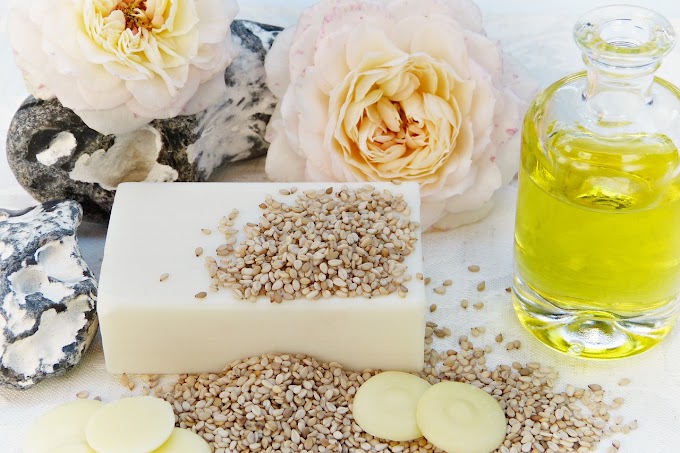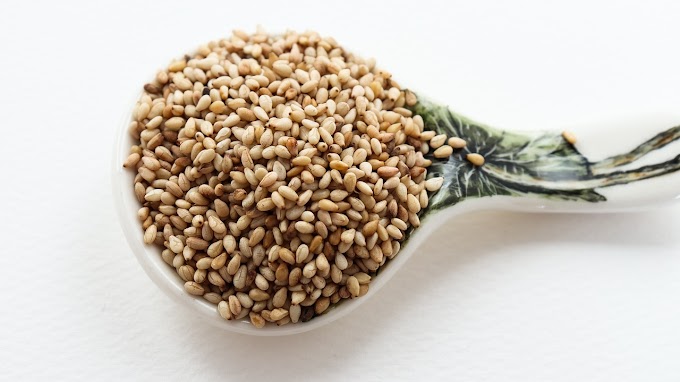Doshas in Ayurveda: Vata, Pitta, and Kapha
Introduction
Ayurveda, the ancient Indian system of medicine, has been gaining popularity worldwide for its holistic approach to health and well-being. At the heart of Ayurveda lies the concept of doshas – Vata, Pitta, and Kapha. These fundamental energies are essential for achieving balance and harmony within the body, mind, and spirit. In this article, we delve into the intricate details of each dosha, shedding light on their characteristics, imbalances, and practical tips for maintaining equilibrium.
Vata Dosha
Vata Dosha:Elements: Air and SpaceCharacteristics: Vata is associated with qualities of movement, change, and expansiveness. It governs functions related to motion, such as breathing, circulation, and elimination. Individuals with a dominant Vata dosha are often creative, enthusiastic, and quick to learn.
Physical Characteristics: Light build, thin frame, dry skin, and a tendency towards coldness.
Functions: Governs movement, controls nerve impulses, regulates elimination, and influences creativity and enthusiasm.
Imbalances: Excessive Vata can lead to anxiety, insomnia, constipation, and joint problems.
Balancing Vata Dosha
Balancing Vata dosha is crucial for maintaining overall well-being and preventing imbalances that can lead to issues such as anxiety, insomnia, and digestive problems. Here are some Ayurvedic recommendations to help balance Vata dosha:
Warm, Nourishing Diet: Include warm, cooked, and easily digestible foods in your diet.
Favor sweet, sour, and salty tastes, as they help balance Vata.
Opt for well-cooked grains, soups, stews, and warm beverages.
Regular Eating Routine: Establish a regular eating schedule with three main meals and snack times.
Avoid skipping meals, as irregular eating can aggravate Vata.
Stay Hydrated with Warm Drinks: Drink warm, herbal teas or hot water throughout the day.
Limit cold and iced beverages, as they can disturb Vata's balance.
Use Warming Spices: Include warming spices like ginger, cinnamon, and cumin.
These spices help enhance digestion and provide warmth to the body.
Favor Oils for Self-Massage: Use warm, sesame oil to perform regular self-massage (Abhyanga).
Focus on massaging the joints and the soles of the feet to ground excess Vata.
Create a Calming Routine: Establish a calming daily routine to provide structure and stability.
Include activities such as gentle yoga, meditation, or a warm bath.
Warm and Comfortable Environment: Ensure your living and working spaces are warm and cozy.
Use warm colors, soft fabrics, and gentle lighting to create a soothing atmosphere.
Adequate Rest and Sleep: Prioritize getting enough rest and maintaining a consistent sleep schedule.
Create a relaxing bedtime routine to support restful sleep.
Limit Stimulants: Reduce or avoid stimulants like caffeine, as they can increase Vata.
Opt for calming herbal teas instead.
Connect with Nature: Spend time in nature to ground and connect with the Earth's energies.
Gentle outdoor activities like walking or hiking are beneficial.
Practice Mindfulness: Incorporate mindfulness practices to stay present and reduce stress.
Techniques such as deep breathing and meditation can be beneficial.
Warm, Nourishing Diet: Include warm, cooked, and easily digestible foods in your diet.
Favor sweet, sour, and salty tastes, as they help balance Vata.
Opt for well-cooked grains, soups, stews, and warm beverages.
Regular Eating Routine: Establish a regular eating schedule with three main meals and snack times.
Avoid skipping meals, as irregular eating can aggravate Vata.
Stay Hydrated with Warm Drinks: Drink warm, herbal teas or hot water throughout the day.
Limit cold and iced beverages, as they can disturb Vata's balance.
Use Warming Spices: Include warming spices like ginger, cinnamon, and cumin.
These spices help enhance digestion and provide warmth to the body.
Favor Oils for Self-Massage: Use warm, sesame oil to perform regular self-massage (Abhyanga).
Focus on massaging the joints and the soles of the feet to ground excess Vata.
Create a Calming Routine: Establish a calming daily routine to provide structure and stability.
Include activities such as gentle yoga, meditation, or a warm bath.
Warm and Comfortable Environment: Ensure your living and working spaces are warm and cozy.
Use warm colors, soft fabrics, and gentle lighting to create a soothing atmosphere.
Adequate Rest and Sleep: Prioritize getting enough rest and maintaining a consistent sleep schedule.
Create a relaxing bedtime routine to support restful sleep.
Limit Stimulants: Reduce or avoid stimulants like caffeine, as they can increase Vata.
Opt for calming herbal teas instead.
Connect with Nature: Spend time in nature to ground and connect with the Earth's energies.
Gentle outdoor activities like walking or hiking are beneficial.
Practice Mindfulness: Incorporate mindfulness practices to stay present and reduce stress.
Techniques such as deep breathing and meditation can be beneficial.
Pitta Dosha
Pitta Dosha:Elements: Fire and WaterCharacteristics: Pitta is associated with qualities of heat, intensity, and transformation. It governs digestion, metabolism, and energy production. Individuals with a dominant Pitta dosha are often ambitious, goal-oriented, and have a sharp intellect.
Physical Characteristics: Medium build, warm body temperature, fair or reddish skin, and a tendency towards irritability.
Functions: Controls digestion, regulates body temperature, governs metabolic processes, and influences courage and intelligence.
Imbalances: Excess Pitta can lead to anger, inflammation, acidity, and skin conditions.
Balancing Pitta Dosha
Balancing Pitta dosha involves adopting practices and lifestyle choices that help cool and soothe the body and mind, as excess Pitta can lead to issues such as irritability, inflammation, and digestive problems. Here are some Ayurvedic recommendations to balance Pitta dosha:
Cooling Diet: Include cooling and hydrating foods in your diet, such as cucumbers, melons, leafy greens, and mint.
Favor sweet, bitter, and astringent tastes, and reduce the intake of spicy, sour, and salty foods.
Stay Hydrated: Drink plenty of cool water throughout the day to help maintain a balanced body temperature.
Coconut water, cucumber juice, and mint tea are also excellent choices.
Avoid Overeating: Pitta individuals should eat in moderation to prevent excess heat in the digestive system.
Allow some time between meals for digestion.
Herbal Teas and Infusions: Enjoy cooling herbal teas like peppermint, licorice, or chamomile.
These teas help to pacify excess Pitta and promote a sense of calm.
Use Cooling Spices: Incorporate cooling spices like coriander, fennel, and cardamom into your meals.
Minimize the use of hot and pungent spices like chili peppers.
Coconut Oil for Massage: Perform self-massage (Abhyanga) using coconut oil to cool the body and calm the mind.
Pay attention to the scalp, forehead, and soles of the feet.
Practice Relaxation Techniques: Engage in relaxation practices such as meditation, deep breathing, and progressive muscle relaxation.
These techniques help to reduce stress and promote emotional balance.
Avoid Overexertion: Pitta individuals should avoid excessive physical and mental exertion, especially during the hot part of the day.
Opt for gentle, cooling exercises like swimming or walking in the evening.
Create a Cool Environment: Ensure your living and working spaces are well-ventilated and cool.
Use cool colors and soft textures in your surroundings.
Limit Stimulants: Reduce or eliminate caffeine, as it can increase internal heat.
Opt for caffeine-free herbal alternatives.
Regular Breaks and Relaxation: Take breaks during work to prevent burnout.
Practice activities that bring joy and relaxation.
Connect with Nature: Spend time in nature, especially around water bodies, to cool and soothe the mind.
Walking in nature can be particularly beneficial.
Cooling Diet: Include cooling and hydrating foods in your diet, such as cucumbers, melons, leafy greens, and mint.
Favor sweet, bitter, and astringent tastes, and reduce the intake of spicy, sour, and salty foods.
Stay Hydrated: Drink plenty of cool water throughout the day to help maintain a balanced body temperature.
Coconut water, cucumber juice, and mint tea are also excellent choices.
Avoid Overeating: Pitta individuals should eat in moderation to prevent excess heat in the digestive system.
Allow some time between meals for digestion.
Herbal Teas and Infusions: Enjoy cooling herbal teas like peppermint, licorice, or chamomile.
These teas help to pacify excess Pitta and promote a sense of calm.
Use Cooling Spices: Incorporate cooling spices like coriander, fennel, and cardamom into your meals.
Minimize the use of hot and pungent spices like chili peppers.
Coconut Oil for Massage: Perform self-massage (Abhyanga) using coconut oil to cool the body and calm the mind.
Pay attention to the scalp, forehead, and soles of the feet.
Practice Relaxation Techniques: Engage in relaxation practices such as meditation, deep breathing, and progressive muscle relaxation.
These techniques help to reduce stress and promote emotional balance.
Avoid Overexertion: Pitta individuals should avoid excessive physical and mental exertion, especially during the hot part of the day.
Opt for gentle, cooling exercises like swimming or walking in the evening.
Create a Cool Environment: Ensure your living and working spaces are well-ventilated and cool.
Use cool colors and soft textures in your surroundings.
Limit Stimulants: Reduce or eliminate caffeine, as it can increase internal heat.
Opt for caffeine-free herbal alternatives.
Regular Breaks and Relaxation: Take breaks during work to prevent burnout.
Practice activities that bring joy and relaxation.
Connect with Nature: Spend time in nature, especially around water bodies, to cool and soothe the mind.
Walking in nature can be particularly beneficial.
Kapha Dosha:Elements: Earth and Water
Characteristics: Kapha is associated with qualities of stability, nourishment, and support. It governs structure and lubrication in the body. Individuals with a dominant Kapha dosha are often calm, compassionate, and exhibit endurance.
Physical Characteristics: Solid build, well-developed muscles, smooth and oily skin, and a tendency towards weight gain.
Functions: Provides structure, lubricates joints, supports the immune system, and influences love and patience.
Imbalances: Excessive Kapha can lead to lethargy, weight gain, congestion, and respiratory issues.
Balancing Kapha dosha
Balancing Kapha dosha involves adopting practices and lifestyle choices that help stimulate and invigorate the body and mind, as excess Kapha can lead to issues such as lethargy, weight gain, and respiratory problems. Here are some Ayurvedic recommendations to balance Kapha dosha:
Warm and Light Diet: Include warm, light, and easily digestible foods in your diet.
Favor pungent, bitter, and astringent tastes, and reduce the intake of heavy, sweet, and oily foods.
Favor Spices: Use warming spices like ginger, black pepper, and mustard in your meals.
These spices help stimulate digestion and counteract Kapha's heavy qualities.
Stay Hydrated with Warm Beverages: Drink warm water or herbal teas to help balance Kapha.
Ginger tea or hot water with a slice of lemon can be particularly beneficial.
Regular Exercise: Engage in regular, invigorating exercise to counteract Kapha's tendency towards stagnation.
Choose activities that are energizing, such as brisk walking, jogging, or dancing.
Vigorous Yoga Practices: Practice dynamic and heating yoga styles, such as Vinyasa or Power Yoga.
Include poses that involve twists, backbends, and inversions.
Dry Brushing or Abhyanga with Light Oils: Stimulate circulation and lymphatic drainage through dry brushing before showering.
If performing Abhyanga (self-massage), use light oils like mustard or sesame.
Create a Dynamic Routine: Establish a dynamic daily routine that includes a variety of activities to keep the mind and body active.
Avoid long periods of inactivity or excessive sleep.
Herbal Supplements: Consider herbal supplements that are known for their Kapha-balancing properties, such as trikatu (a blend of ginger, black pepper, and long pepper).
Warm Environment: Ensure your living and working spaces are warm and well-ventilated.
Use bright colors and lively decorations to create a stimulating atmosphere.
Limit Heavy and Sweet Foods: Reduce the consumption of heavy and sweet foods, as they can exacerbate Kapha imbalances.
Opt for lighter, more pungent options.
Aromatherapy: Use stimulating and invigorating essential oils, such as eucalyptus, rosemary, or peppermint.
Diffuse these oils or incorporate them into your self-care routine.
Mind-Body Practices: Engage in practices that stimulate the mind, such as reading, learning new skills, or engaging in creative activities.
Avoid excessive napping during the day.
Warm and Light Diet: Include warm, light, and easily digestible foods in your diet.
Favor pungent, bitter, and astringent tastes, and reduce the intake of heavy, sweet, and oily foods.
Favor Spices: Use warming spices like ginger, black pepper, and mustard in your meals.
These spices help stimulate digestion and counteract Kapha's heavy qualities.
Stay Hydrated with Warm Beverages: Drink warm water or herbal teas to help balance Kapha.
Ginger tea or hot water with a slice of lemon can be particularly beneficial.
Regular Exercise: Engage in regular, invigorating exercise to counteract Kapha's tendency towards stagnation.
Choose activities that are energizing, such as brisk walking, jogging, or dancing.
Vigorous Yoga Practices: Practice dynamic and heating yoga styles, such as Vinyasa or Power Yoga.
Include poses that involve twists, backbends, and inversions.
Dry Brushing or Abhyanga with Light Oils: Stimulate circulation and lymphatic drainage through dry brushing before showering.
If performing Abhyanga (self-massage), use light oils like mustard or sesame.
Create a Dynamic Routine: Establish a dynamic daily routine that includes a variety of activities to keep the mind and body active.
Avoid long periods of inactivity or excessive sleep.
Herbal Supplements: Consider herbal supplements that are known for their Kapha-balancing properties, such as trikatu (a blend of ginger, black pepper, and long pepper).
Warm Environment: Ensure your living and working spaces are warm and well-ventilated.
Use bright colors and lively decorations to create a stimulating atmosphere.
Limit Heavy and Sweet Foods: Reduce the consumption of heavy and sweet foods, as they can exacerbate Kapha imbalances.
Opt for lighter, more pungent options.
Aromatherapy: Use stimulating and invigorating essential oils, such as eucalyptus, rosemary, or peppermint.
Diffuse these oils or incorporate them into your self-care routine.
Mind-Body Practices: Engage in practices that stimulate the mind, such as reading, learning new skills, or engaging in creative activities.
Avoid excessive napping during the day.
Remember that Ayurveda is a holistic system that considers individual uniqueness. Consulting an experienced Ayurvedic practitioner can provide personalized guidance for achieving and maintaining dosha balance and overall health.
FAQ's
Q1: What is Ayurveda?A1: Ayurveda is an ancient system of medicine that originated in India over 5,000 years ago. It focuses on promoting holistic health and well-being through a balance of the body, mind, and spirit.
Q2: What are doshas in Ayurveda?
Q2: What are doshas in Ayurveda?
A2: Doshas are fundamental energies or principles that govern the functioning of the body and mind. The three main doshas in Ayurveda are Vata, Pitta, and Kapha.
Q3: What is Vata dosha?
Q3: What is Vata dosha?
A3: Vata is the dosha associated with the elements of air and space. It governs movement, including bodily functions like breathing and circulation. Vata individuals are often creative, energetic, and adaptable but may experience imbalances leading to anxiety and digestive issues.
Q4: What is Pitta dosha?
Q4: What is Pitta dosha?
A4: Pitta is the dosha associated with the elements of fire and water. It governs digestion, metabolism, and transformation. Pitta individuals are often driven, focused, and organized but can face imbalances leading to irritability, inflammation, and digestive problems.
Q5: What is Kapha dosha?
Q5: What is Kapha dosha?
A5: Kapha is the dosha associated with the elements of earth and water. It governs stability, structure, and lubrication in the body. Kapha individuals are typically calm, nurturing, and strong but may experience imbalances leading to lethargy, weight gain, and respiratory issues.
Q6: How can I determine my dominant dosha?
Q6: How can I determine my dominant dosha?
A6: Ayurvedic practitioners use various methods, including questionnaires, pulse diagnosis, and examination of physical and behavioral traits, to determine an individual's dominant dosha.
Q7: Can doshas change over time?
Q7: Can doshas change over time?
A7: Yes, the balance of doshas can be influenced by factors such as lifestyle, diet, seasons, and stress. Dosha imbalances can occur, and maintaining balance is key for overall health.
Q8: How can I balance my doshas?
Q8: How can I balance my doshas?
A8: Ayurveda recommends personalized lifestyle and dietary modifications based on your dominant dosha. This may include specific foods, daily routines, and activities that promote balance and harmony.
Q9: Are there specific foods for each dosha?
Q9: Are there specific foods for each dosha?
A9: Yes, Ayurveda suggests dietary choices based on your predominant dosha. For example, Vata individuals may benefit from warm and grounding foods, Pitta individuals from cooling and soothing foods, and Kapha individuals from lighter and warming foods.
Q10: Can Ayurveda treat specific health conditions?
Q10: Can Ayurveda treat specific health conditions?
A10: Ayurveda is a holistic system that aims to prevent and treat imbalances. It is often used to address a wide range of health issues, but it's essential to consult with a qualified Ayurvedic practitioner for personalized guidance.







